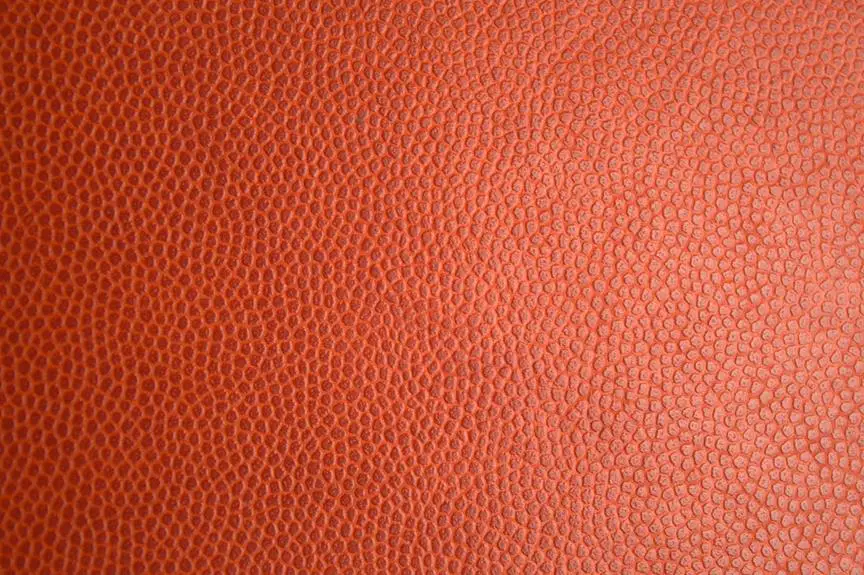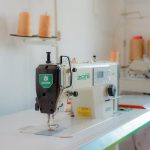When it comes to choosing between cowhide leather and PU leather, it's like deciding between a classic vintage car and a modern electric vehicle. Each has its own unique appeal and advantages, and the decision ultimately depends on your specific needs and preferences.
In this analysis, we'll delve into the durability, aesthetics, cost, maintenance, environmental impact, and versatility of both types, providing you with the mastery you need to make an informed choice.
So, whether you're drawn to the timeless charm of cowhide or the innovative features of PU leather, we'll equip you with the knowledge to determine which option best suits your lifestyle and values.
Key Takeaways
- Cowhide leather is more durable and strong than PU leather.
- Cowhide leather offers a natural and luxurious aesthetic with unique markings and variations in color.
- PU leather provides a sleek and uniform appearance, often mimicking the grain patterns of real leather.
- PU leather is generally more affordable than cowhide leather, but cowhide leather tends to age beautifully.
Durability
How long will cowhide leather last compared to PU leather when subjected to regular wear and tear?
When it comes to durability comparison, cowhide leather outshines PU leather in terms of longevity and strength.
Cowhide leather is renowned for its exceptional durability, making it a preferred choice for high-quality leather products. The natural fibers and interwoven structure of cowhide leather contribute to its remarkable strength, allowing it to withstand regular wear and tear without deteriorating quickly.
In contrast, while PU leather may offer a similar appearance to genuine cowhide leather, it lacks the same level of durability. PU leather is prone to peeling, cracking, and tearing over time, especially with frequent use.
The synthetic nature of PU leather means that it doesn't possess the inherent strength and resilience of cowhide leather.
Therefore, when considering the longevity and strength of leather products, cowhide leather surpasses PU leather in terms of durability.
Investing in cowhide leather ensures that your leather goods will maintain their quality and appearance for an extended period, making it a superior choice for those seeking long-lasting and durable leather products.
Aesthetics
When comparing cowhide leather and PU leather, you'll notice distinct differences in their aesthetics. The visual appeal and design options of each material play a significant role in their overall attractiveness and suitability for various products.
- Visual Appeal:
Cowhide leather exudes a natural and luxurious visual appeal, characterized by unique markings and variations in color. The organic texture and rich patina of cowhide leather create a timeless and sophisticated look that's highly sought after in premium products.
On the other hand, PU leather offers a sleek and uniform appearance, often mimicking the grain patterns of real leather. Its consistent finish and vibrant colors can be appealing for modern and trendy designs.
- Design Options:
Cowhide leather provides a wide range of design possibilities due to its natural characteristics, making it ideal for classic, rustic, or vintage-inspired creations. Its ability to develop a beautiful aged look over time adds to its allure.
Conversely, PU leather offers versatility in design, as it can be easily manipulated to achieve different textures, finishes, and colors, making it suitable for contemporary and avant-garde styles.
In considering aesthetics, the choice between cowhide leather and PU leather ultimately depends on the desired visual impact and design direction of the end product.
Cost
Both materials offer different cost considerations when it comes to choosing between cowhide leather and PU leather for your products.
When it comes to cost comparison, PU leather is generally more affordable than cowhide leather. This is primarily due to the difference in production processes and the materials used. PU leather is a synthetic material, made from a split leather backing that's coated with a layer of polyurethane.
On the other hand, cowhide leather is a natural material, which requires more complex processing and tanning methods. The quality assessment is crucial when considering the cost. While PU leather may be more budget-friendly, it often lacks the durability and longevity of cowhide leather.
Cowhide leather tends to age beautifully, developing a patina over time, while PU leather may start to show signs of wear and tear sooner. Therefore, when evaluating cost, it's essential to factor in the long-term value and quality of the material.
Ultimately, the cost disparity between cowhide leather and PU leather should be weighed against the desired lifespan and performance of the product.
Maintenance
Taking care of cowhide leather involves regular cleaning and conditioning to maintain its natural luster and durability.
On the other hand, PU leather requires less maintenance, but it's important to clean spills promptly to prevent staining.
Understanding the specific care needs of each type of leather will help you prolong the life of your leather items and keep them looking their best.
Cleaning Cowhide Leather
To properly maintain cowhide leather, it's important to regularly clean and condition it to ensure its longevity and durability. Here are some cleaning tips for cowhide leather:
- Use a soft, damp cloth to gently wipe away any surface dirt and dust.
- For tougher stains, mix a mild soap with water and gently clean the affected area.
- Always test any cleaning method on a small, inconspicuous area first to ensure it doesn't damage the leather.
When it comes to stain removal, it's crucial to address spills and marks promptly. Blot the stain with a clean cloth to absorb any excess liquid, and then follow the cleaning tips mentioned above.
Proper maintenance won't only keep your cowhide leather looking its best but also extend its lifespan.
Caring for PU Leather
Proper maintenance of PU leather involves regular cleaning and conditioning to ensure its longevity and durability.
To clean PU leather, start by wiping it with a damp cloth to remove surface dust and dirt. For tougher stains, mix a mild detergent with water, apply it to a soft cloth, and gently wipe the affected area. Avoid using harsh chemicals or abrasive cleaning tools, as they can damage the material.
After cleaning, it's essential to condition the PU leather to keep it supple and prevent cracking. Use a specialized PU leather conditioner and apply it in a circular motion, allowing it to be absorbed by the material.
Regular cleaning and conditioning will help preserve the quality and appearance of your faux leather items, ensuring they look great for years to come.
Environmental Impact
When considering the environmental impact of cowhide leather versus PU leather, it's important to weigh the sustainable options and eco-friendly material choices.
By examining how each type of leather is produced and its effects on the environment, you can make a more informed decision about which is the best choice for you.
Understanding the environmental impact of these materials is crucial in making a responsible and conscious decision.
Cowhide Vs PU: Environmental Impact
Considering environmental impact, cowhide leather and PU leather both have significant implications. When it comes to the environmental impact of these materials, it's essential to weigh the pros and cons. Here's a closer look at how cowhide and PU leather stack up:
- Cowhide Leather
- Biodegradable material
- Resource-intensive production process
- Concerns about methane emissions from cattle
- PU Leather
- Synthetic material made from petroleum-based substances
- Production process involves chemicals and pollutants
- Non-biodegradable and contributes to plastic waste
Each material has its own set of environmental considerations, from the resource usage in cowhide production to the chemical processes and non-biodegradability of PU leather. Understanding these factors is crucial in making informed choices about the environmental impact of leather products.
Sustainable Leather Options
To make an environmentally conscious choice between cowhide leather and PU leather, consider sustainable leather options with minimal environmental impact. Sustainable fashion prioritizes ethical sourcing and production methods.
When it comes to sustainable leather, look for certifications such as the Leather Working Group (LWG), which assesses the environmental compliance and performance capabilities of leather manufacturers. Additionally, seek out leather from tanneries that use eco-friendly practices, such as vegetable tanning, which utilizes natural tannins instead of harmful chemicals.
Ethical sourcing involves ensuring that the leather is a byproduct of the meat industry and not sourced from animals specifically raised for their hides.
Eco-Friendly Material Choices
If you frequently prioritize sustainable fashion, you can make an environmentally conscious choice by considering the eco-friendly material choices and their environmental impact when comparing cowhide leather and PU leather. When evaluating eco-friendly options, it's essential to consider the sustainable choices that align with your values.
Here's a brief comparison:
- Cowhide Leather
- Biodegradable and natural material
- Requires significant resources such as water and land for cattle farming
- Tanning process can involve environmentally harmful chemicals
- PU Leather
- Made from synthetic materials, reducing the demand for animal products
- Production process can involve toxic chemicals and pollutants
- Longevity and potential for recycling make it a sustainable choice if properly managed
Considering these factors can help you make an informed decision based on your environmental priorities.
Versatility
When choosing between cowhide leather and PU leather, considering the versatility of each material is crucial. Versatility comparison between cowhide leather and PU leather reveals the different use cases for each material. Cowhide leather is known for its durability and ability to develop a beautiful patina over time, making it a popular choice for high-end products such as luxury handbags, wallets, and furniture. On the other hand, PU leather offers a wide range of colors and textures, making it a versatile option for fashion accessories, upholstery, and automotive interiors.
| Use Cases | Cowhide Leather | PU Leather |
|---|---|---|
| Fashion | Luxury handbags, wallets | Fashion accessories |
| Upholstery | High-end furniture | Versatile color options |
| Automotive | Luxurious car interiors | Durable and easy to clean |
The table above illustrates the different use cases for cowhide leather and PU leather, showcasing their unique versatility in various industries. Whether you prioritize the luxurious patina of cowhide leather or the diverse color options of PU leather, understanding their distinct applications is essential in making an informed decision.
Frequently Asked Questions
Can Cowhide Leather Be Used for Outdoor Furniture or in High-Traffic Areas?
Yes, cowhide leather can be used for outdoor furniture or in high-traffic areas. It offers excellent outdoor durability and can withstand heavy use. With proper maintenance, it can last for years, making it a great choice for these applications.
Does PU Leather Have the Same Luxurious Look and Feel as Cowhide Leather?
Yes, PU leather can have a luxurious look and feel similar to cowhide leather. It offers better durability and lower maintenance, but may not be as sustainable. Its aesthetic appeal and ease of care make it a popular choice.
Are There Any Long-Term Cost Savings Associated With Choosing Cowhide Leather Over PU Leather?
Choosing cowhide leather over PU leather can lead to long-term cost savings due to its durability and low maintenance requirements. While initially more expensive, cowhide leather's luxurious appearance and feel make it a worthwhile investment.
What Specific Cleaning and Conditioning Products Are Recommended for Cowhide Leather?
For leather cleaning, use a gentle leather cleaner to remove dirt and stains. For leather conditioning, opt for a high-quality leather conditioner to keep the material supple and prevent cracking. Regular maintenance ensures longevity.
How Do the Environmental Impacts of Cowhide Leather and PU Leather Compare in Terms of Production and Disposal?
When comparing the environmental impact of cowhide leather and PU leather, it's important to consider their production processes. Cowhide leather involves resource-intensive rearing of animals, while PU leather manufacturing requires chemicals with potential environmental implications.
- How Does Ring Spun Cotton Affect Garment Fit and Shape Retention? - August 13, 2024
- What Are the Challenges in Producing Ring Spun Cotton? - August 13, 2024
- Is Ring Spun Cotton Suitable for Plus-Size Clothing? - August 13, 2024







